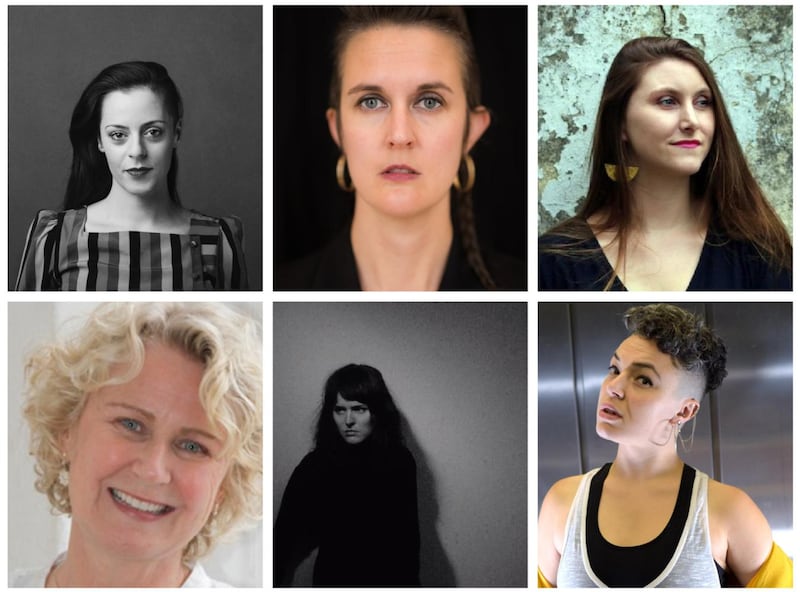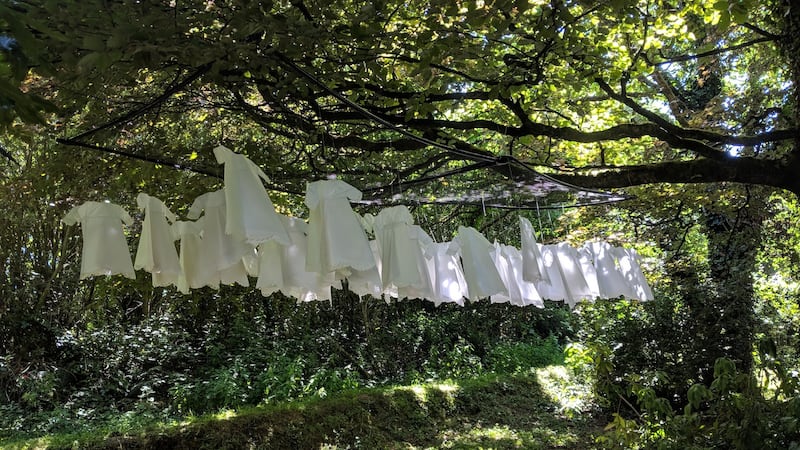In her poem Tell All the Truth but Tell it Slant, Emily Dickinson wrote that “The Truth must dazzle gradually/ Or every man be blind –”. A survivor of Ireland’s religious-run institutions, poet Connie Roberts sees power in the subversive, in speaking the truth directly. “Come,” she welcomes, “Let the blazing truth blind.”
Today, April 17th, a host of Irish poets and performers, participating in a public online reading, will follow Roberts’s lead, drawing attention to the subject of Irish mother and baby homes and other church and State-run institutions, and exploring the difficult question of how artists can bear witness to suffering and trauma. How can craft and poetic technique be used to illuminate human experience? What are the challenges of working ethically and what are the responsibilities? How can we reclaim silence?
As many as 56,000 women were sent to mother and baby institutions across this island from the first years of the Free State until as recently as 2006. Women were called “offenders” by authorities for being pregnant. Many had their names changed and their clothes replaced with a uniform, forced to work and separated from their children. Women in these institutions were told not to speak to each other. One mother told me that she spoke her hopes instead to her baby while pregnant, a baby taken from her after birth. Making visible these stories in some way, sharing words, offers connection. There is a power in speaking out. People who have broken silences in this country have become catalysts for change.
In writing Republic of Shame: Stories from Ireland’s Institutions for ‘Fallen Women’ (Penguin, 2019), I spoke to countless people affected by the ongoing legacy of mother and baby homes and other institutions. More recently the report of the Commission of Investigation into Mother and Baby Homes, which failed to accurately document survivor testimonies and often contradicted their lived experiences, showed how official narratives often silence or dismiss the voices of those who should be heard.
Online conversations
Over the past months I have again been working with both survivors and transgenerational survivors to develop a series of online conversations and collaborations. The programme begins with Come, Let the Blazing Truth Blind today, April 17th, a landmark event conceived by Annemarie Ní Churreáin and Kimberley Campanello and supported by Poetry Ireland, Maynooth University and the Arts Council. The programme concludes with Breaking the Silence on May 29th, an event live-streamed from the stage of the National Concert Hall as part of the International Literature Festival Dublin. In between there are events with local venues through the Live Network in Tipperary, Kildare, Cavan, Longford, Drogheda and Roscommon.

Come, Let the Blazing Truth Blind brings together poetic responses from five dynamic female artists. Connie Roberts, author of Little Witness (Arlen House, 2016) writes of her experiences growing up in an Irish industrial school. She challenges us to face the light that survivor testimonies are casting. The event title is taken from a line of her poem Inheritance. Kimberly Campanello, author of Motherbabyhome, reads from a 796-page “report” comprised of conceptual and visual poetry about the St Mary’s mother and baby home in Tuam, Co Galway. Her work provides an excavation of voices: the poems are composed entirely of text taken from historical archives, contemporary media and other sources related to the home, including files given to her by Catherine Corless.
Ní Churreáin, author of Bloodroot (Doire Press, 2017), reads an extract from a new work titled The Foundling Crib, which references histories of St James’s Hospital in Dublin and which looks in particular at the site of the old Foundling Hospital in Dublin of the 1700s where as many as 200,000 infants and children were left in institutional care. Today no plaque or sign marks the grounds where so many lives were lost. Her own grandmother was sent from Northern Ireland to a mother and baby home institution in Castlepollard, Co Westmeath. “Poetry is a form, I think, that holds well the complexities of human suffering,” writes Ní Churreáin. “A poem can be a way of making a partly erased narrative visible again.”
Sound piece
Cork-based artist Vicky Langan provides a sound piece titled The Palms, recorded at the grotto in Granard, Co Longford, on January 31st, 2014, the 30th anniversary of Ann Lovett’s death. Irish singer Jess Kav, who herself was born legally “illegitimate” and who has spoken about developing a “linguistic arsenal” to articulate the generational impact of the religious-run institutions and the stigma around illegitimacy, will read a poem written for the launch of my book.
To my own introduction of this event I bring my own lived experience. I was born in 1988 to parents who were unmarried, and I have spoken to people who were sent to and born in the mother and baby institutions that same year. The legal status of illegitimacy in Ireland, stripping children and parents of equal rights and protections, was only abolished in 1987. Today many people affected by these events are only beginning to search for their origins.
Writers and performers working with the subject of trauma face fundamental questions about art-making when the trauma is ongoing. Today access to justice and even basic information is still being denied to many survivors. How do you make creative work about injustices still affecting so many lives in a way that resists passive reflection or sympathy but instead opens up new space for conversation and action? How do you use craft and technique to transform human experience and to also to create space for the testimonies of others? How can we work with the subject of shame?

Terri Harrison, a mother forcibly sent back to Ireland by the Crusade of Rescue in London and separated from her child through the mother and baby home institutions, once told me that shame never belonged to the women and children caught within this cruel system; the shame belonged instead to those in positions of power who enforced and perpetuated silence as mothers were incarcerated, as children died and as families were torn apart.
Refusal to listen
Silence can be a refusal to listen. The people speaking about what happened within the walls of the mother and baby institutions, within the Magdalene laundries and industrial schools, have broken silences but still not been heard. There are many people still afraid to speak even within their own families. I wanted to bring together musicians and writers with their own personal connection to this ongoing legacy, to share creative responses and speak outside of official narratives, at a time when there is a demand for truth and change in Ireland.
On May 29th, from the stage of the National Concert Hall, Terri Harrison will share her own personal experience of Ireland’s “shame-industrial complex”, as will actor, writer and adoption rights activist Noelle Brown, who co-wrote and performed in the play Postscript about searching for her origins. The live event will include responses from poet, novelist and playwright Elaine Feeney, Creative at the Tuam Oral History Project, and from writer and academic Philomena Mullen, who grew up in Ireland’s institutional system and is working on a book for Skein Press. We will hear from Majella Moynihan, author of A Guarded Life, who was forced to give her son up for adoption and charged with breaching Garda regulations for being pregnant outside of marriage, and from Jess Kav, who speaks about the generational impact of the institutions.
Musical responses on the night will come from Irish-Sierra Leonean performer Loah, who starred as Mary Magdalene in Andrew Lloyd Webber and Tim Rice’s Jesus Christ Superstar, and Dundalk folk outfit The Mary Wallopers. On stage, there will be an installation by the award-winning and internationally renowned glass artist Alison Lowry from Co Down, who uses an ancient technique called “pate de verre”, casting antique christening robes to recreate them in glass and whose exhibition (A)Dressing Our Hidden Truths is in the National Museum of Ireland.
Through breaking silences and sharing testimonies, through these creative responses, we hope to shed more light on this ongoing legacy and show the need for more voices to be heard.



















